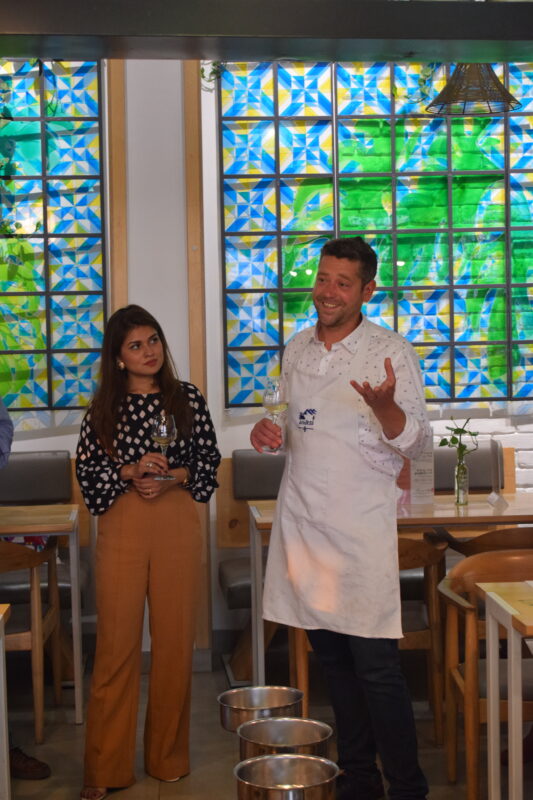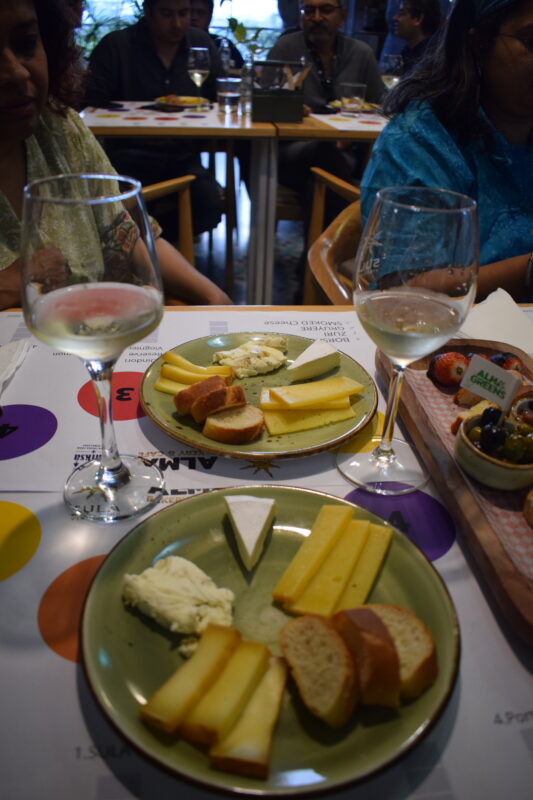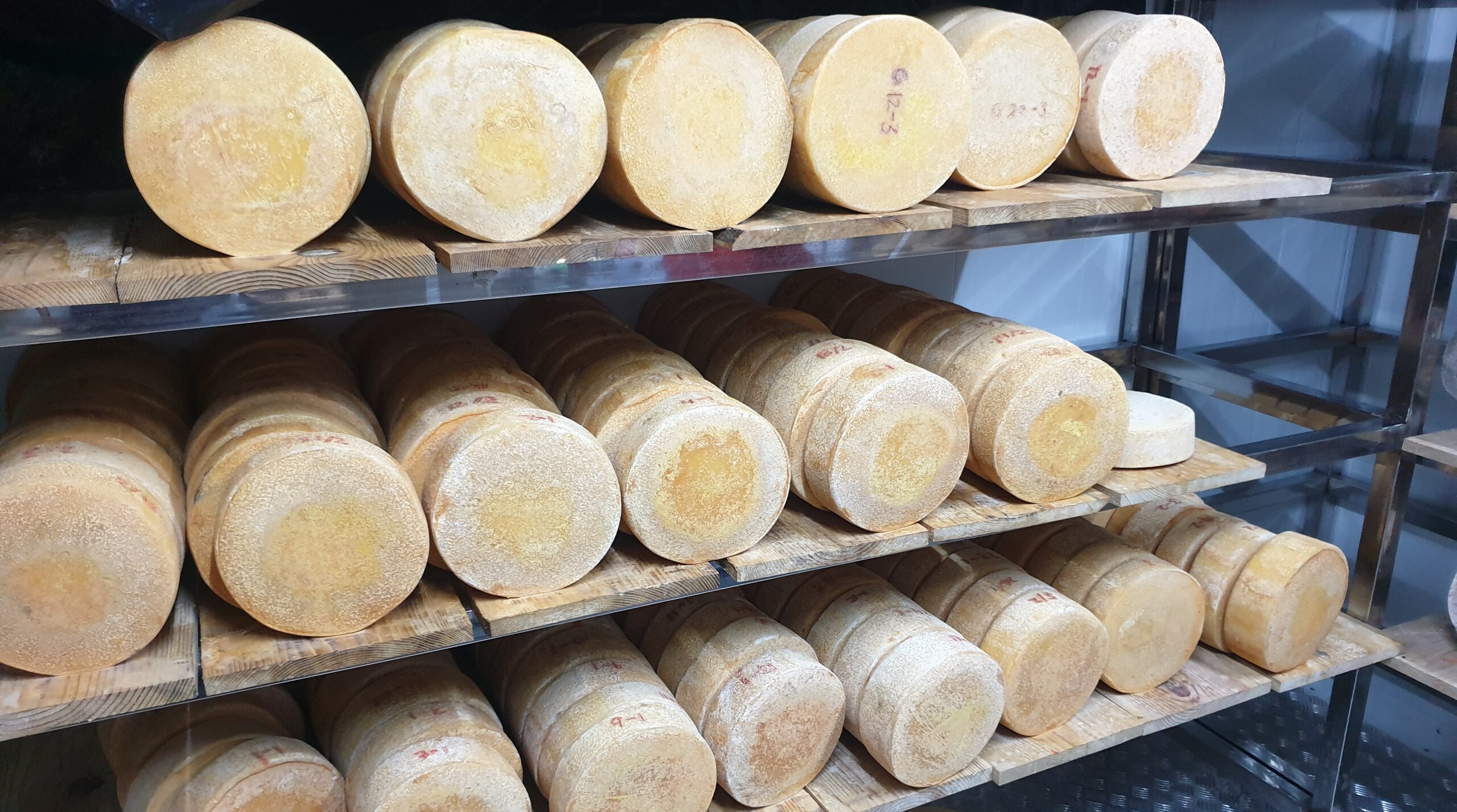There are over 1,000 varieties of cheese and umpteen wines in the world. So if you accept the very French idea that wine must be paired with cheese for the ultimate gastronomical high, how do you make the match?
“What grows together, goes together,” says François Laederich, a Frenchman who has gone native. “Go local when pairing.” We understand that means Indian wine with Indian cheese, or going French all the way.
The choice is no longer as simple as Sula with Amul. Indian cheese now comes in many flavours and textures. All cheese is loaded with protein, fat, calcium and phosphorus; some cheeses have aromatic mould on the rind, the outer layer, or through-and-through.
And wine? Well, there are also umpteen varieties. So you have to go to a pairing session to learn what goes with what. The choice is not going to be handed over to you on a platter – like match-making, it takes some doing. Laederich says it depends on soil, environment and palate.
His love affair with India began in 2012, when the Paris-born chef and bartender ran a boutique hotel in Puducherry along with his family.
Then the mountains called. The outcome was a home in Mashobra, a pristine hill town in Himachal Pradesh, where he set up a cheese factory in 2019 and founded the brand Amiksa along with his wife Debarati.
“I trained in cheesemaking in the south of France,” he smiles. Being a hotel industry pro, the Frenchman understood the value of artisanal food products. Besides, India is an exciting new proposition as the competition is very limited – basically, there are only two well-known brands to contend with: Britannia and Amul.
“In Sanskrit, amiksha means separating the solid from the liquid,” explains Debarati and that’s what cheese is all about. “The quality of the milk is very important, as that gives the right flavours,” explain the couple. The cows in Himachal Pradesh are grass-fed and the pristine environment keeps them healthy. This means good milk and good cheese.
“I find people are very fascinated by the cheesemaking process. We have regular cheesemaking workshops at Himalayan Orchard, Kotkhai, near Shimla.” Besides teaching, the couple also travel around to hold tasting and pairing sessions, and are open to factory visits for the really serious people. “We trained two interns who came from hotel management institutes.” He has also trained his staff in cheesemaking.
Offering 10 varieties of handcrafted cheese that take weeks of diligent care to prepare, Amiksa Cheese is available in select retail stores and B2B outlets across Delhi, Kolkata and Chandigarh.
Texture counts
“I get some moulds from France but I have found good ones in India too,” says Francois. There are soft, hard, semi-hard cheeses.

The Indian palate prefers the soft varieties, as per his observations. Cheddar and smoked cheese are among the popular ones. Amiksa has developed a unique soft creamy cheese, Borsali Nuts, which is loaded with nuts and raisins.
The couple tie up with wine companies such as Sula and Fratelli Vineyards for tasting and pairing sessions. The thumb rule is that the flavours and tastes of both the products should complement and not overpower. “The subtle white wines pair well with most cheeses and Indian foods,” explains Heena Riat, Senior Manager, Tastings and Marketing, Sula. But there are permutations and combinations and subtle nuances.
For instance, Borsali Nuts makes for a sweet ending to a meal with a medium bodied, sweet Port Gold by Sula. This is a red wine, easily available in most stores across India and in an affordable range.
Zuri, a white creamy textured cheese with a soft rind and delicate flavours, works well with Sula Brut. Everything in pairing is about the blend of aromas, flavours and textures. Like a date, wine ‘n’ cheese are best enjoyed as a slow meal, savouring each bite and sip.
Artisanal cheese
For the more evolved, artisanal cheese is another option. While the two big brands are available in every market, the personalised flavoursome and wholesome handcrafted cheeses are slowly making a pace for themselves. Offering nine varieties of hard and semi-hard cow cheese, Darima Farms began as a passion project by Arvind Chawla and Saurabh Vinayak in Mukteswar in 2017. He roped in experts from Switzerland to train the staff and the cheese is available in select retail and B2B outlets.
“There is a shift towards organic and healthy food. And the pandemic was a game changer, as people were experimenting with food at home and local flavours became the norm,” says Suyasha Misra, CEO, Darima Farms. Citing the importance of awareness sessions, she adds, “We reach out to customers through social media, events, traditional media and farmers markets. The one-to-one communication with people at these markets works wonders. There are normal queries about the stink, the moulds, the flavours, ageing. There is nothing stopping a cheesemaker from experimenting, only quality matters. Our Chilli Bomb flavour is a hit.”
Cheese is made from cow, buffalo and goat milk. For a foodie or a connoisseur, handcrafted cheese is a treasure that graces the table on all meals. “During my childhood, we had cheese daily,” says Bogusia, owner Alma Bakery & Cafe, Noida, who was born in Poland. Married to an Indian and living in India for the last decade, she says good cheese was also made in her home.
“We made soft cottage cheese at home, even one with herbs. This is usually eaten with chopped red radish, spring onions, salt and pepper, marking the advent of summer. In Poland, herbs and greens are freshly plucked in summer.
She remembers her school lunchbox always comprised sandwiches with gouda cheese, cucumber and tomato slices. Her 12-year-old son loves cheese, “even the peculiar ones”, she smiles. And she finds good cheese in India also now.
The Platter
A cheeseboard will comprise contrasting cheeses with accompaniments, such as crackers, biscuits, grapes, nuts, celery, dips. It may be served before a meal or after dessert.

All About Cheese
The origins of cheesemaking lie beyond the recorded era. However, researchers have not found any evidence about the place of origin, whether it started in Europe, Middle East or Central Asia. There is a theory that cheesemaking could have started around 8,000 BCE, when sheep were first domesticated.
Then there is the story that an Arab trader who discovered cheesemaking accidentally. He would store his milk in animal skins and container made from the stomach of an animal. This resulted in the milk being turned to curd and whey by the rennet (an enzyme) from the stomach. And thus, cheese was born.
Archaeological records date cheesemaking to 5500 BCE, as strainers coated with milk-fat molecules were found. in Kuyavia, Poland. The records of world’s oldest cheese, dating to approximately 1200 BCE, were found in Egyptian tombs. The earliest ever preserved cheese was found in the Taklamakan Desert in Xinjiang, China, dating to 1615 BCE.
Coming to Europe, Greek mythology credits Aristaeus with the discovery of cheese. Homer’s Odyssey (8th century BCE) describes the Cyclops making and storing sheep’s and goats’ milk cheese. The Roman Empire loved cheese too.
Many popular cheeses were first recorded in the late Middle Ages or after, such as Cheddar around 1500, Parmesan in 1597, Gouda in 1697 and Camembert in 1791. The love for cheese has grown with each era.
For more stories that cover the ongoings of Delhi NCR, follow us on:
Instagram: https://www.instagram.com/thepatriot_in/
Twitter: https://twitter.com/Patriot_Delhi
Facebook: https://www.facebook.com/Thepatriotnewsindia





